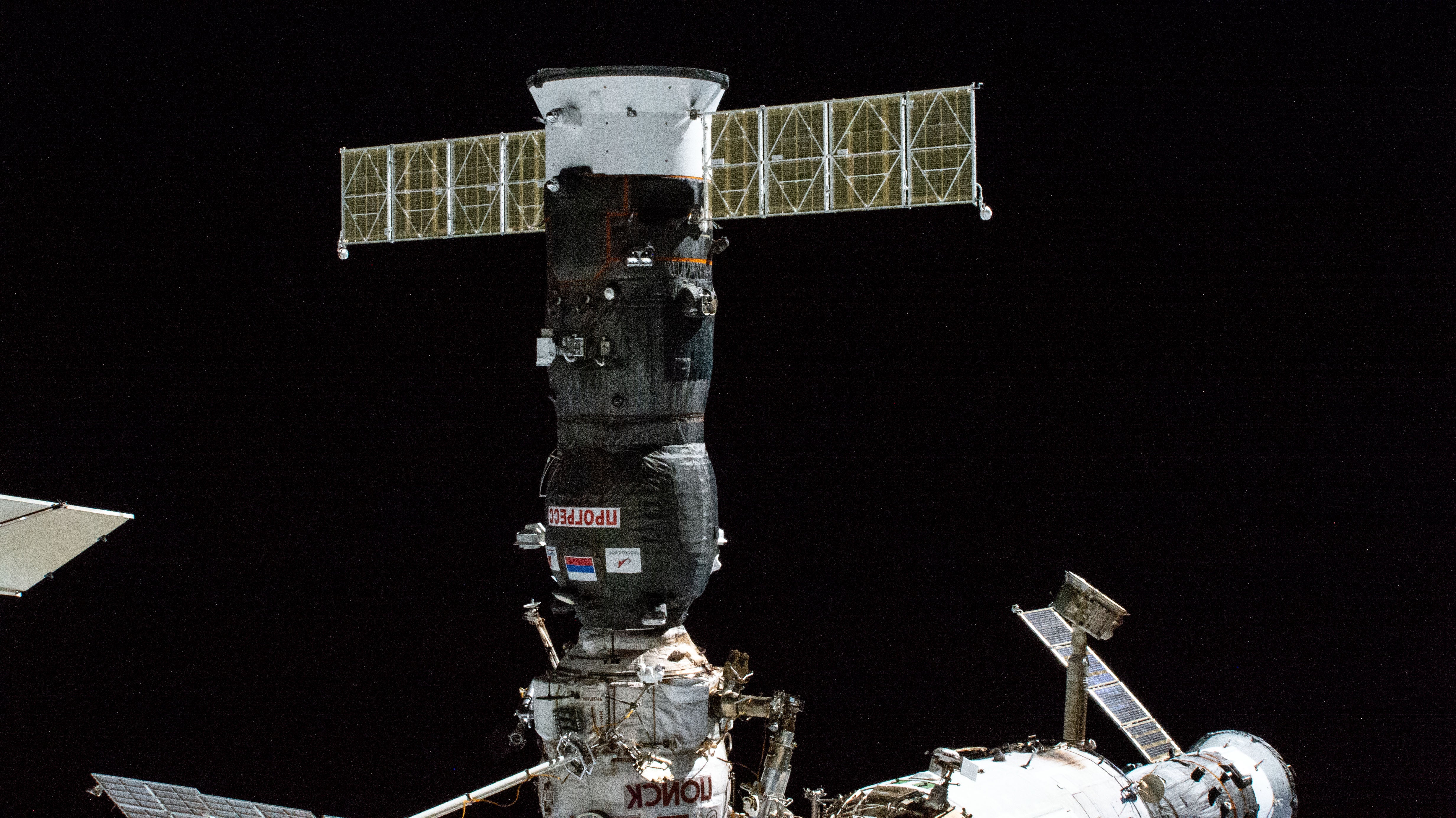Not one but two Russian vehicles docked to the International Space Station have leaky radiators, the latest being a Progress 82 freighter that arrived last October. Russia attributed the first leak, which happened in December, to a micrometeorite, but the unusual parallels between the two have investigators wondering about a “systematic error.”
Sergey Krikalev, executive director for crewed space programs at Roscosmos, broke the news to reporters on Saturday, February 11, Russian state media TASS reported. “There was a coolant leak from the thermal control system on the cargo ship that has been docked to the station for several months,” he said, adding that the situation is similar to the one that happened to the radiator of Russia’s Soyuz MS-22 capsule in mid-December.
A statement released by NASA that same day confirmed the leak. “The crew, which was informed of the cooling loop leak, is in no danger and continuing with normal space station operations,” the space agency said. The hatches between Progress 82 and the space station are open, while temperature and pressure readings remain normal. The Russian space agency has launched an investigation into the Progress 82 leak, with NASA teams assisting.

The uncrewed Progress 82 freighter is currently docked at the station’s Poisk module, having arrived on October 27, 2022 with nearly three tons of food, fuel, and supplies. The original plan was to undock the cargo craft on Friday, February 17, and ditch it over the Pacific Ocean, but it’s not clear if these plans have changed given this latest incident.
Roscosmos attributed a micrometeorite to the MS-22 leak, a conclusion it reached after reviewing imagery and performing hypervelocity tests on the ground. During a press briefing in January, Joel Montalbano, International Space Station program manager at NASA, said NASA is in “concurrence” with Roscosmos on the cause of the leak.
With this latest incident, however, and its eerie similarity to the first, it’s fair to wonder if the problem may be systemic in nature, like some kind of common manufacturing defect or something having to do with launch preparations. Russia has used its Soyuz and Progress vehicles, which are based on similar designs, for decades, but to have something like this happen twice in the span of two months is nothing short of bizarre.
Krikalev said the exact location of the leak on the Progress 82 spacecraft remains out of sight, making a preliminary diagnosis difficult, TASS reported. An “external survey with detailed high-quality images” would help to narrow a possible cause, he admitted. Roscosmos will conduct a “profound analysis” of the incident to prevent a recurrence in the future, as this is the “main task that we are facing now,” Krikalev said. Among other things, investigators will look at the launch preparation sequence, along with materials and technologies used to assemble the radiators. “Making sure that this was not a systematic error of any kind is what matters most,” Krikalev said.
The incident comes as Roscosmos is set to launch MS-23 — an expedited mission to transport an uncrewed Soyuz capsule to the ISS as a replacement for MS-22. Russian cosmonauts Sergey Propokyev and Dmitry Petelin, who reached the ISS aboard MS-22, are currently without a reliable “lifeboat,” as Roscosmos deemed the damaged Soyuz unsafe for crewed reentry through Earth’s atmosphere due to the absence of reliable internal temperature control.
As for NASA’s Frank Rubio, who also went up aboard MS-22, he’s set in case the ISS needs to be evacuated in the event of an emergency. A seat liner from the damaged capsule was recently relocated to a SpaceX Crew Dragon parked outside. MS-23 is scheduled to launch from the Baikonur Cosmodrome in Kazakhstan at 8:57 p.m. ET.
More: ISS Dodges Space Junk With Damaged ‘Life Boat’ Parked Outside
